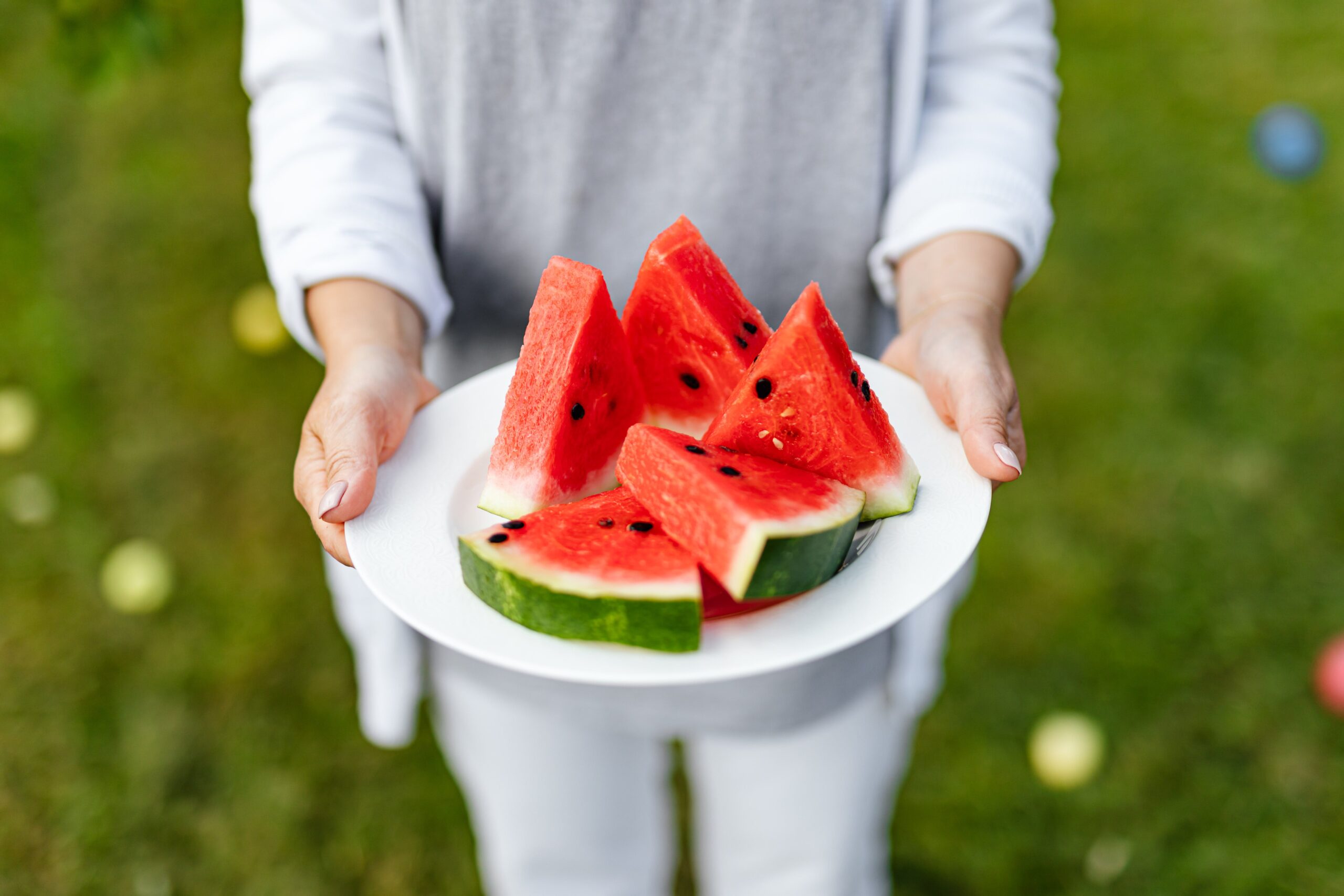Imagine that you are on a picnic and it’s a hot, sunny day. Isn’t it nice to cool off with the bright red and juicy treat? A nice slice or two of watermelons are just perfect for sunny days, as you bite into the delicious slice, the refreshing juice runs down your chin and onto your shirt. This is what summer tastes like, isn’t it? That’s why in this article, we are going to know more about this delicious juicy, red fruit.
What is a Watermelon?
Watermelon is a large, oval fruit that has green skin along with the sweet, juicy pulp, and seeds. However, even if red watermelons are the most common ones we see, watermelons come in other colors, too, such as yellow, white, and orange. Watermelons are made of 92% water, and they are related to other fruits and vegetables such as cucumbers, pumpkins, and squash.
Watermelons that have different colors also tend to taste a little different from each other because of the substances that give them their colors. Nevertheless, they are all sweet. For example, Lycopene, which is the substance that gives red watermelons their color, is the same thing that gives red tomatoes their color. And beta-carotene, the substance that gives carrots their orange color, is the same thing that gives orange watermelons their color.
Some people consider watermelons a vegetable instead of a fruit, and it has some qualities of a vegetable. Still, in the United States, they mostly think and use it as a fruit.
Where Does It Grow?
Watermelons originally came from Africa. They are now grown all over the world, including the United States. In fact, the U.S. is one of the top ten growers of watermelon in the world, with China growing the most of them.
Watermelons grow on vines, and you can tell if it is ripe and ready to pick if there is a yellowish-white spot on the bottom of its rind where it sat on the ground while it ripened and turned sweet.
Watermelon Varieties
There are over 1,200 types of watermelons that are grown all over the world, and their colors can vary from pink, orange, red, white, or yellow.
- Golden Midget – This type of watermelon has pink flesh along with a golden rind. It takes a total of 70 days to plant, grow, and harvest this type of watermelon.
- Carolina Cross – This type of watermelon holds the world record for being the heaviest watermelon in the world, where it weighed about 159 kilograms. The Carolina Cross has green skin along with red flesh. It takes about a total of 90 days to harvest this watermelon.
- The Moon and Stars – This watermelon variety was first cultivated in 1926. It has a black or purple rind along with small yellow circles. It has pink or red flesh with brown seeds, and it can weigh from nine to twenty-three kilograms.
- Orangeglo – This watermelon variety has a sweet, orange flesh along with a large and oblong shape. The Orangeglo can weigh from 9 to 14 kilograms, and it takes about 90 to 100 days for it to grow and harvest.
- Densuke- This type of watermelon can weigh up to eleven kilograms, and it has a black rind with no spots or stripes. The Densuke watermelon is specially grown in the island of Hokkaido, Japan.
- Cream of Saskatchewan – This watermelon plant produces small and round fruits that are only 25 centimeters in diameter. Aside from that, it also has a light, thin, and dark green striped rind along with a whitish flesh and black seeds. The cream of Saskatchewan watermelon typically grows in cold climates, and it takes about 80 to 85 days for it to be planted, developed, and harvested.
- Melitopolski – This type of watermelon plant produces round fruits that have about 28 to 30 centimeters in diameter. The Melitopolski watermelon can be typically seen in Moscow during the summer season. This watermelon takes about 95 days to grow and harvest.
Conclusion
A watermelon is a large, oval fruit with green skin, sweet, juicy pulp, and seeds, though some are grown without seeds and only have seed coats. They come in different colors and are grown all over the world. The whole watermelon can be eaten, including the seeds and rind or outer skin.
